Could these balls help reduce plastic pollution?
- Published
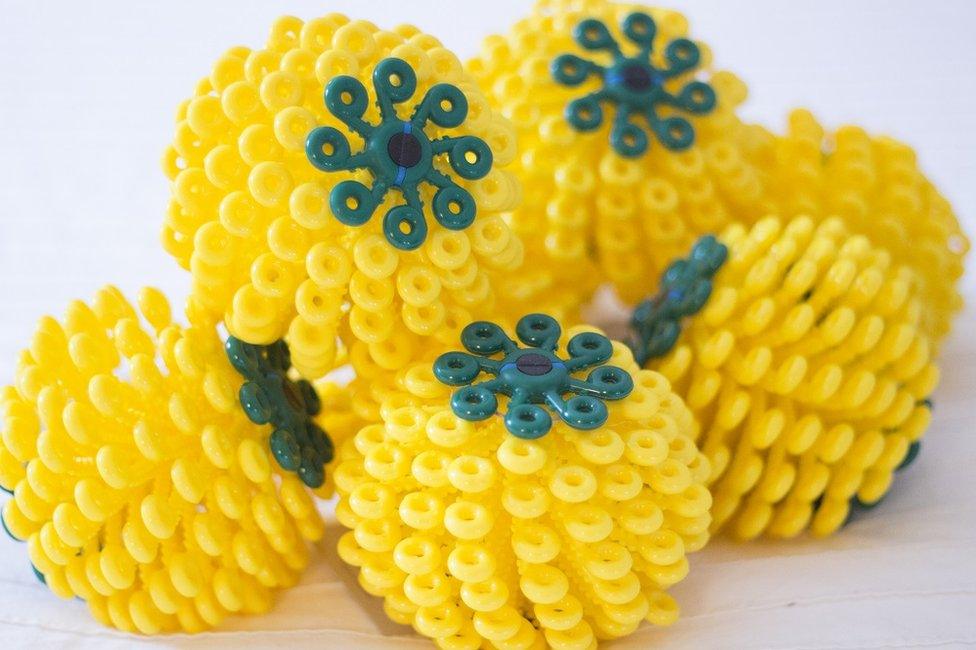
Rachael Miller believes the Cora Ball could hugely reduce microfibre pollution
Concern is mounting over the volume of plastics in our oceans and, in particular, how tiny particles of plastic and other synthetic materials are infiltrating every part of our ecosystem. Can technology help address the problem?
In October 2009, windsurfing teacher Rachael Miller went to help clean up an island off the coast of Maine in the north-east of the US.
There had been a heavy storm and "we found the beach covered in debris", she says, mostly washed up plastic fishing gear.
Her husband was incensed. "Marine debris is one of the few things that really make me angry," he said.
So Ms Miller, who had studied marine archaeology, decided to devote herself to keeping plastics from ever reaching the ocean.
In April, she began selling a special gadget for capturing those tiny bits of synthetic material - called microfibres - that come off our clothes in the wash.
Four inches (10cm) in diameter and made from recycled and recyclable plastic, the Cora Ball imitates the structure of coral in the ocean. While it doesn't catch everything, the company says it captures between a quarter and a third of microfibres in every wash.
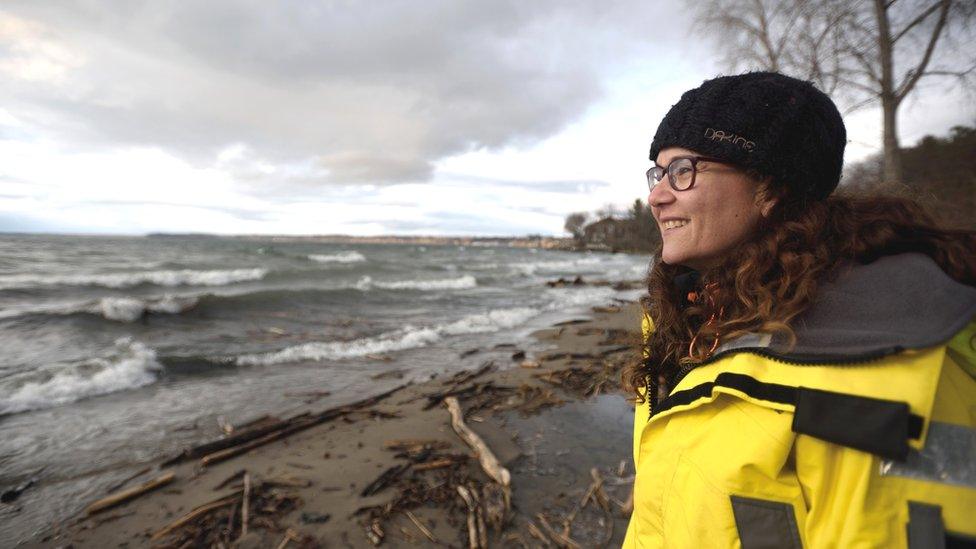
Cora Ball founder Rachael Miller works to prevent microplastics entering the oceans
Customers on the crowdfunding site Kickstarter pre-ordered 15,500 of these in 2017.
Cora Ball is one of several small start-ups working to keep microplastics and other microfibres out of the water system.
The shocking truth is that we could be ingesting 11,000 pieces of plastic a year just through eating shellfish, says Ghent University's Lisbeth Van Cauwenberghe.
It's a pollution we all contribute to when we wash our clothes.
Up to 700,000 microfibres can shed from a typical 6kg (13lb) household load, says Imogen Napper, a postdoctoral marine science researcher at the University of Plymouth in the UK.
And a sizable minority can make it into the ocean. So laundry is turning oceans into "a big plastic soup", says Ms Napper.
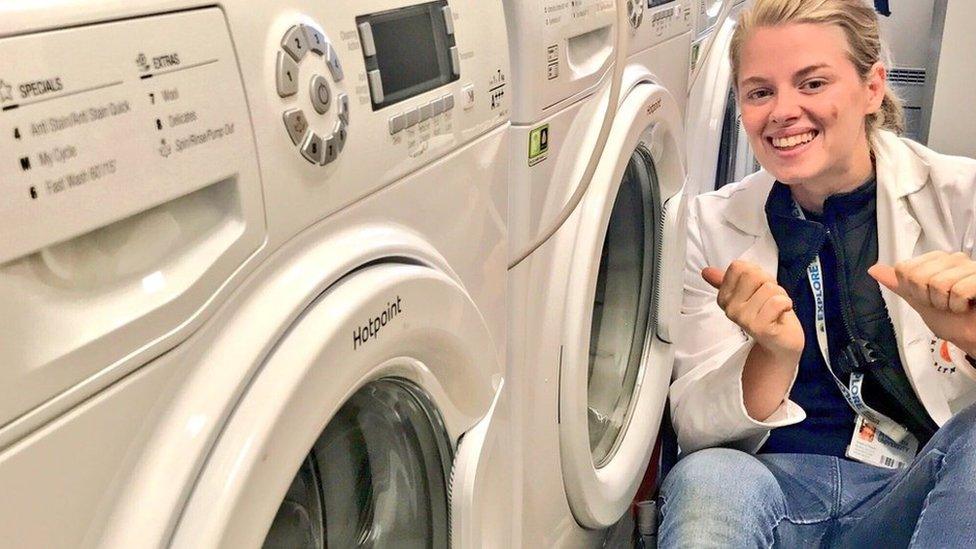
Marine scientist Imogen Napper says laundry is a big contributor to microfibres in the oceans
Many of these fibres, which can be as small as three microns, a thirteenth the width of a human hair - are too small for water treatment plants to remove.
Despite being so small, organic pollutants in the oceans, like polychlorinated biphenyls (PCBs) and dichlorodiphenyl trichloroethane (DDT), can stick to them, creating a nasty amalgam.
There can be as many as 100,000 microplastics in a cubic metre of ocean, researchers say, which are then eaten by marine creatures.
More than two thirds of fish species in California markets have microfibres in them, says Chelsea Rochman, an aquatic ecology professor at the University of Toronto.
Two other people working to keep microfibres out of the water are Alexander Nolte and his friend Oliver Spies, both enthusiastic surfers from Berlin.
They invented a laundry bag called Guppyfriend after coming up with the idea while brainstorming at a beer garden, says Mr Nolte.
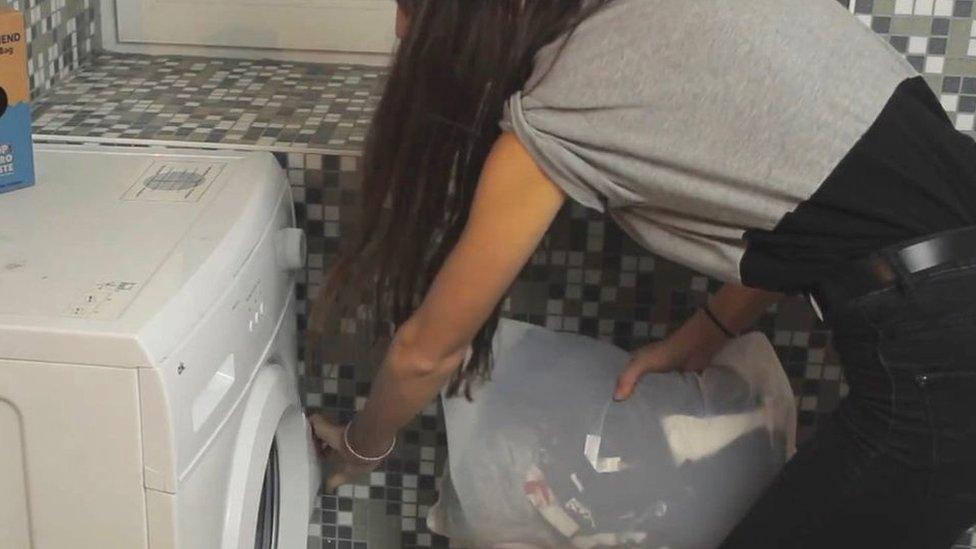
The Guppyfriend bag collects microfibres shed from synthetic clothes in the wash
The bag cushions clothes to release fewer plastic fibres, and catches those that form, he says.
"If you wash synthetic textiles, there are 86% fewer fibres that break, and those that do break are in the bag," Mr Nolte explains.
Like Cora Ball, they started with a Kickstarter campaign, which closed in December.
At first they thought the bag was a "quite amusing idea, and we can bring it to market very quickly," says Mr Nolte, "and we were fundamentally wrong."
The biggest challenge, he says, was to get openings in the bag the right size to let in enough water, without letting microfibres escape.
"It is pretty easy to make a bag, but to do it in a way that gets the filament right to reduce fibre shedding is pretty high tech," Mr Nolte observes.


In Denmark, 60% of all sewage sludge is "getting used in agriculture," says Lars Monster from the KD Group, a wastewater tech company in the southern Danish town of Vejle.
These solid remnants from waste water treatment are distributed on farmland as fertiliser. But plastics in the sludge then enter the food chain.
One problem is that most wastewater treatment plants don't aim to remove microfibres, largely because regulations don't require them to.
So Mr Monster's company has developed a new filtration technology that can remove 90% of microplastics, he says. He's hoping to get the figure up to 96%.
The ultimate aim is to recycle all the removed plastics, says Mr Monster, and "get to the point where microplastics are a resource".
Four science and bioengineering students at London's Imperial College won a prize in October for coming up with an inexpensive way to remove microplastics from wastewater.
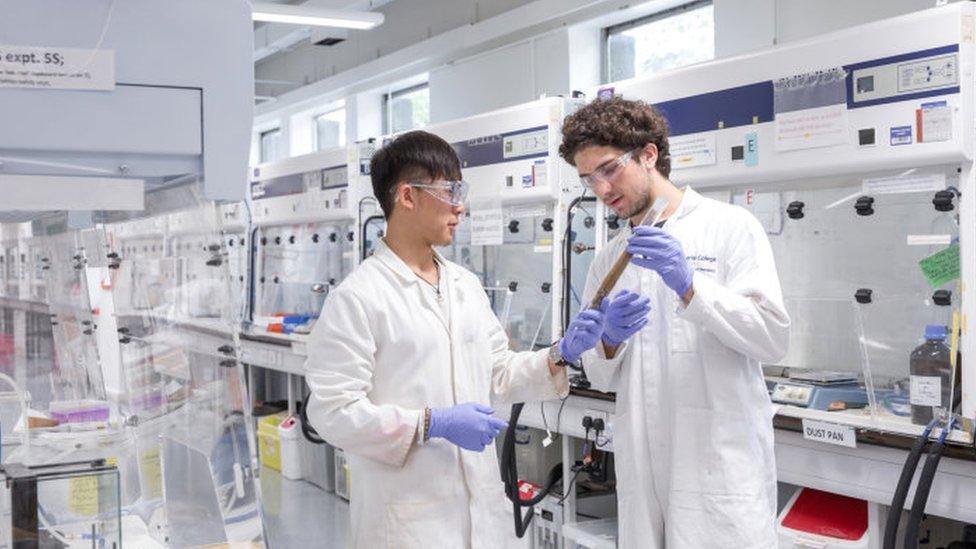
Students Jedidiah Cheung and Dario Mongiardi are working on filtering out microplastics
Introducing an additional compound to the filtration stage of treatment could remove upwards of 99% of microplastics cheaply without retrofitting a treatment centre, says Dario Mongiardi, one of the students.
Cora Ball's Ms Miller - who also runs a clean-water non-profit, the Rozalia Project - says these laundry and wastewater treatment technologies are complementary.
If just 10% of US households used Cora Ball it would keep the equivalent of 30 million water bottles from washing into public waterways a year, claims Rachael Miller.
"If you eat or drink or wear clothes or use objects," she says, "this affects you."
Follow Technology of Business editor Matthew Wall on Twitter, external and Facebook, external